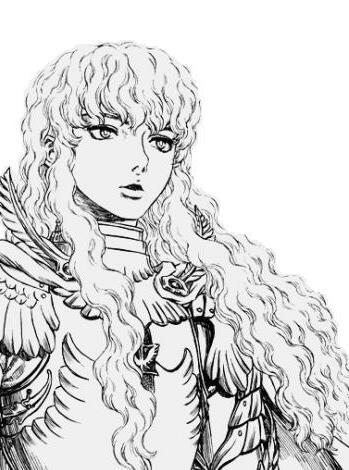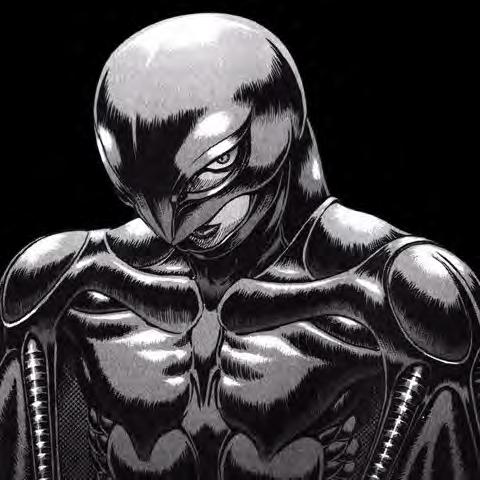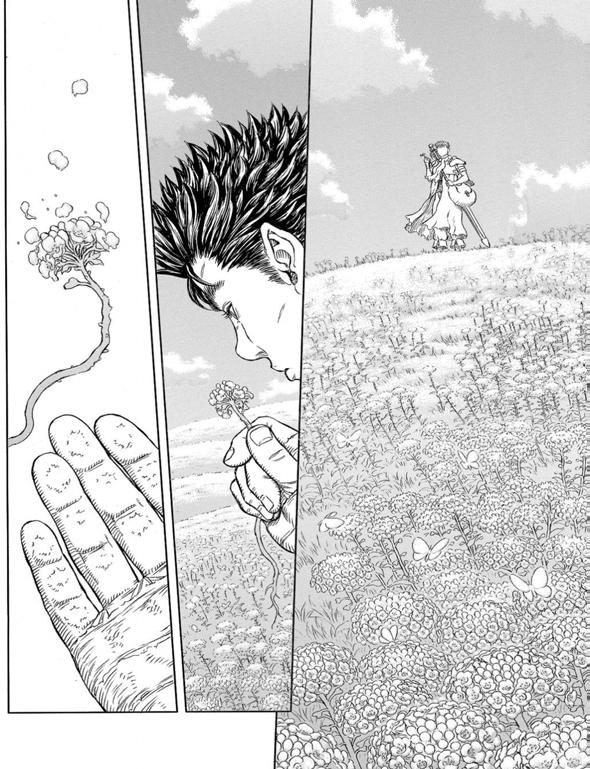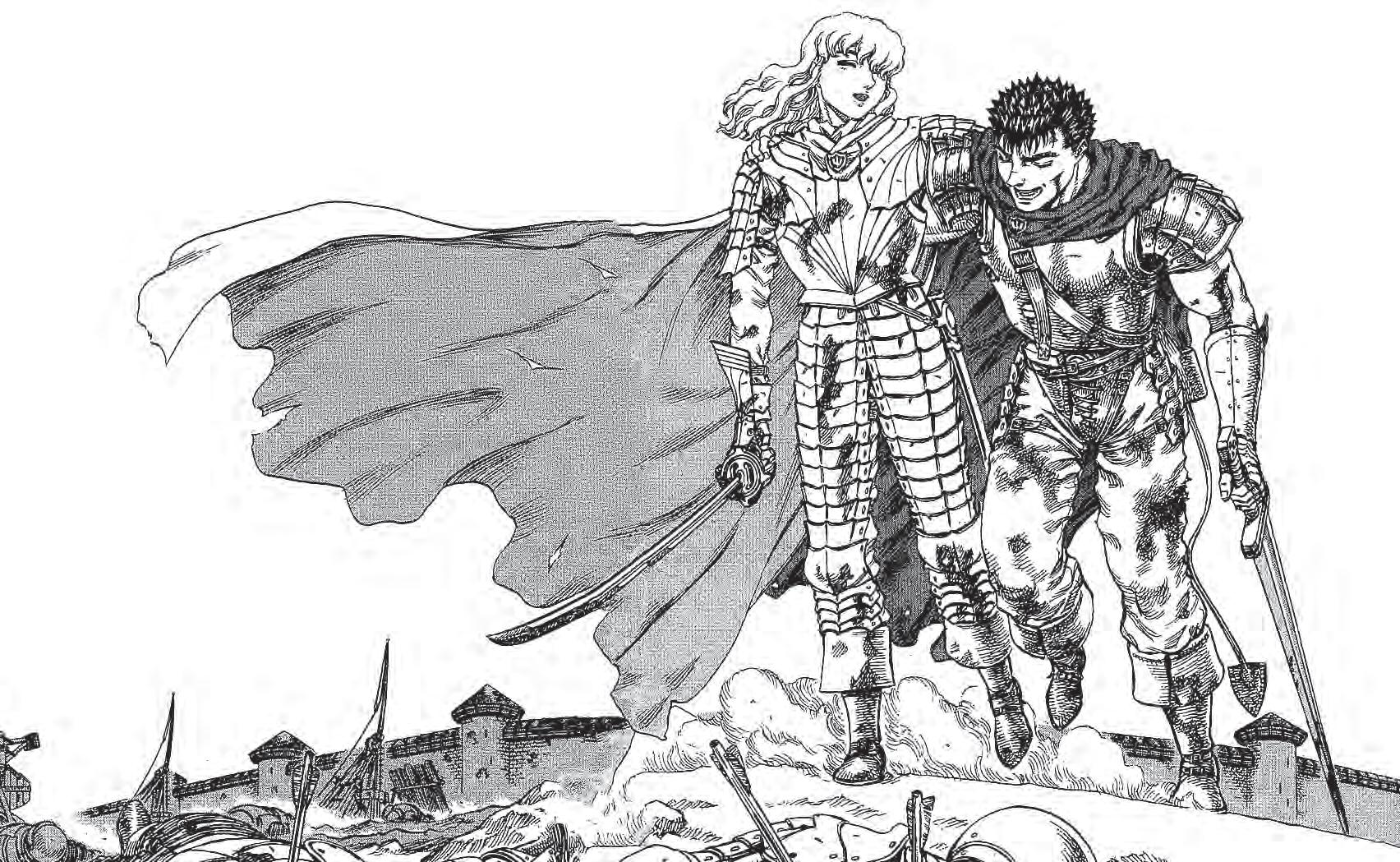
16 minute read
Kentaro Miura
THE LOVE, LOSS, AND FINALITY A REVIEW:
Finn Hawker
Advertisement
To be Berserk - Out of control with anger or excitement. It’s difcult to imagine that something with a title like this could detail some of the realistically grief-stricken characters learning to trust each other in a world striving against such an outcome. It’s even harder to imagine that a group referred to as Berserk fans would be united together in mourning the author for what most of them consider to be one of the greatest stories written. Berserk is written by Kentaro Miura, a manga artist who is famed for his long time work in the manga industry, with Berserk frst premiering in 1988, and continuing through to still receiving updates in 2021. Manga being a form of graphic novel created in Japan that follows a typical art style. Berserk details Guts, and his journey through a world of medieval barbarism slowly collapsing as elements of dark fantasy begin to invade, brought to life through the marvelous art of Kentaro Miura. Miura used every aspect of his medium to his advantage, and as a result, his story became greatly popularised, even in western culture, far from his birth country of Japan. While I’m only talking about the manga, it is worth mentioning that prior to wider internet usage, Berserk spread through dubbed versions of the 1998 anime made available in western countries. From there, it established a foothold in the minds of many a future creator, and is now considered one of the most infuential works in Dark Fiction, described as being comparable to Blade Runner in terms of the legacy it created through pure inspiration. Miura’s works would infuence artists both in Japan and overseas, with series like Attack on Titan, Dark Souls, Final Fantasy, Demon Slayer, God of War, and Fullmetal Alchemist all giving some credit to Berserk.

Berserk involves graphic depictions of violence, torture, and sexual assault, and is inaccessible to some as a result, and that is completely fne if you don’t want to read about those subjects. Not to mention, that as a discussion of the whole series, it will contain spoilers, and that if you are okay with the content contained in Berserk, I still highly recommend reading it, even in it’s unfnished form. WHAT IT’S ALL ABOUT: THE RETROSPECTIVE OF BERSERK...
THE CHARACTERS OF BERSERK:
The characters of Berserk are the key to its emotional story. The way they experience the world and the people around them is where so much emotion is derived from, and where Miura centres the readers for the story he wants to tell. Guts is our protagonist, a man that we frst see in a state of untameable rage, lashing out at everyone around him, and often speaking few words, choosing instead to speak with the iconic sword he wields, a 5 foot tall monstrosity described as resembling a hunk of iron more than it does a sword. The early story is meant to imbue Guts with this near demonlike strength, paired with the inability to care for anything in the world that isn’t whatever target he next aims to crush under his boot. But, being set up are the pieces to what made him like this, and suddenly we go back from Guts’ rampage through the kingdom of Midland all the way back to his birth, born an orphan under a hanging tree, already alone in the world. We follow his childhood, becoming a mercenary from as young as he could fght, and raised by a surrogate father and military leader Gambino. In his late childhood, and if you ignored the content warnings above, this is the fnal warning, Guts is sexually assaulted by another mercenary, who paid Guts’ father to commit the atrocity. Guts reacts by killing him and Gambino, and feeing, and the event has immeasurable repercussions on his life. Guts is withdrawn from any contact with humans, afraid of being around other mercenaries because they remind him of the father he wrongfully trusted and killed, and only learns to possibly trust other people thanks to Grifth. Grifth is the leader of a new mercenary group known as the Band of the Hawk, and around the same age as Guts. His hair is long, curly, and white, in stark contrast to Guts’ short-cut spiky jet-black hair, and his frame is smaller and far more traditionally feminine. This ties into themes of subversion
within black and white and good and evil as the story progresses, but for now, we know that Grifth and Guts become fast friends on the battlefeld, though we know little about Grifth. In comparison to Guts, whose whole life story we know, Grifth is unnervingly left as a blank slate, with the audience only knowing of his dreams to own a kingdom. A third character joins our main cast, Casca, a rare female member of the Band of the Hawk. Though she originally despises Guts for his connection to Grifth, something she envies, they come to form a trio of what feel like realistic and well formed friends. This begins to extend to the Band of the Hawk, and we feel as though Guts has found a family in a world so determined at frst to punish him. However, as I will discuss soon, the narrative structure unnerves us as we reach the pivotal point of Berserk. Everything changes in a singular event, all for the worse, and we see Guts lose everything he gained.
The rare moments of warmth he captured in surrounding himself in others and their dreams is ripped away from him, and we see this grief on an unimaginable scale turn around and manifest in a rage that drives him Berserk.
And we rejoin Guts at where the story starts. And it is here that his brilliance as a character is shown. He is the typical male action protagonist, especially for Japanese media, and especially in the 80’s. He is near unkillable, stronger than any human could ever be, and in a near constant state of rage, with the only break being stoicism. However, he is a subversion of these tropes, and a really well-developed and tragic one. His rage comes from the grief of losing the only people to ever love him in his world. His stoicism and distance from other people is not from some macho desire for being a lone wolf, but rather trauma inficted on him at a young age. In a sexual scenario, where we would expect most male action heroes to be heightened to the pinnacle of masculinity, he is instead struck by panic and fear because of his past. He is a complex and truly hurt man, and as the story progresses, his rage changes and grows, as he fnds a new family in the slowly breaking world. Unfortunately, we do not get to witness his full arc, ending with the tragic death of Kentaro Miura. But, Guts has connected with the audience in the space he has gotten, and has served as a wonderfully deep protagonist, and I do not feel that is an overstatement to say that his characterisation is one of the reasons Berserk has grown so strongly in popularity over the years. And hopefully, past Miura’s death, Guts continues to strive through his journey as new readers join in, and collectively are enthralled by the centrepiece to the legacy of Miura’s artwork. Berserk’s genius lay in the complexity and beauty of narrative arcs. Berserk opens with Guts at his lowest point, rarely accomplishing anything but saving himself. When we go back to his past, we remember where he ends up, and the idea that he could be changed so greatly is always with the audience. We spend the happiest time of his life sharing his insecurity that it is feeting, because of how the story starts, and yet the audience is still surprised and shocked at the discovery of what happens. At the end of the frst arc, the Black Swordsman arc, Guts manages to overcome a foe that leaves him near dead, and immediately afterwards, he encounters someone who he recognises, who holds a power over him so immense he can’t even move. We hear that his name is Grifth, and immediately after, we’re back to where it all started. After Guts leaves the Band of the Hawk for a short while, even after befriending them, he feels as though he has no place there. After his leave, Grifth loses his rational thought and ends up imprisoned and tortured for nearly a year. However, upon his rescue, the truth is revealed that Grifth has been broken beyond repair, and could never fght again. The Band of the Hawk despairs, having lost their leader, and in that moment, Grifth fnally reaches his destined point in life where a necklace of his awakens, taking him and the entire band to a new location. What follows is a terribly tragic event, of a near biblical scale, wherein gods and demons descend, with no distinction between them in their physical form, heightened by the artwork of Miura, with highly detailed beasts twisted from human forms, and what the reader experiences is nothing but hopelessness. Here, everyone that Guts loves is slain and eaten before him, his survival only the result of his drive and eventually a rescue made by another force. We watch as Grifth is raised to a point of godhood alongside those that caused the massacre, seizing the opportunity to rule a kingdom at the cost of the lives of every one of his comrades. It is a deeply tragic and horrifying event to behold, and it brings us to a point of despondency. It is a cyclical ending that due to the use of narrative structure, has put us on our knees right next to Guts. And as the story goes on, we continue to hope that Guts can reach a place of happiness again, and that despite everything, as Grifth becomes the central antagonist and strives against him, he can succeed, not in the traditional sense of action stories where he beats the bad guy, but instead by fnding people to love again, who love him.

THE WORLD OF DARK FANTASY IN BERSERK:
The world of Berserk, centralised in Midland, is one of a dark medieval Europe, where at some point in history, humanity is on the verge of collapsing beneath its own wars. The world that is established is one of light fantasy, where the wide world does not accept the existence of magic, but due to the viewers beginning further on in the world, where magic is present, going back to a world where we are yet to see demons is unnerving. The world of mercenaries is devoid of the horror we frst see in the world, and it results in the build-up to the Eclipse, the event previously mentioned wherein tragedy strikes. This build-up creates a sense of tension, where we are left unsure of what could happen to cause this world to devolve into the state that we see it in later. After this point, the fantastical has made its way into the world. However, the ramifcations are terrible for the world. This was one of the earliest popular modern texts to use pre-existing mythos and related fantastical elements of a world as an evil force, referred to now as Dark Fantasy. Their presence in this world serves to raise stakes continuously, and to create visual and narrative scenarios that are intriguing and unique, and would serve to inspire the world of many fantasy writers since. I likened it previously to texts like Blade Runner for Cyberpunk, or Jaws for The Blockbuster, and while it is not quite as monumental as these two, but for those who haven’t read Berserk, I hope this helps you realise what it did for it’s genre, and how important that was.
The art of Berserk is one of it’s strongest aspects, even compared to the high praise that I have just given every other element of its creation. It is grand in its portrayal of events on a biblical scale, and minute in how it shows the individual grooves upon a tree, or the expression of a face. In a 2D still-image medium, portraying action is something of great difculty, a fact that can be recognised even to a novice of genres like this. Done wrong, it can be confusing, with characters and their movements lost between the panels, seeming to teleport between random positions. However, Miura uses the massive sword Guts wields to provide these large frames dominated by the sweeping attacks, with each swing followed often by a trail of wind, showing the terrible force used but also creating a fow to follow the implied action between each panel. And even in these cluttered and grand scenes of war and action, Miura always puts an emphasis on detail, often to a ridiculous degree. Armour with its individual scrapes and bumps, houses with their own wooden planks and furnishings that fll it with life, and often such vibrancy brought about in a black and white medium. Miura had been drawing since a young age, and by the age of 15, was able to produce works that difered wildly in quality to his peers of the same age. His art style continued to evolve, and this is visible throughout the 30 years of his work. We see the change, slow over time, as things become more refned, and more consistent. This is especially apparent in how Guts changes throughout his drawing in how his face is drawn, and the rare moments in which he smiles and is happy. If you are a fan of Berserk, it is likely that you knew about it’s long hiatuses throughout the years, with multiple months passing by in between chapters being released. I believe that the extreme amounts of efort Miura was willing to put into his work, in the details of his art and the nuances of each character, even beyond the central cast, was the cause of these hiatuses, but in the end, were also the reason for his legacy.
Berserk was incredibly inspirational to many creators of fantasy that had grown up with it in an age where the west was beginning to be introduced to japanese media more commonly, and the incredible foundation that I have just described created a shockwave. For example, the Dragonslayer sword wielded by Guts has inspired the designs of many other characters, most obviously Cloud from the Final Fantasy series. I mentioned in the beginning people who have stated quite clearly that they were inspired, and that doesn’t take into account the likely millions that have felt motivated or reached by Berserk. I mentioned the various series such as Attack on Titan or Dark Souls that saw inspiration on both an artistic and personal level from the works of Miura. Beyond even the felds of fantasy, or even the creation of art, I have talked to people who have taken infuence from this series in how they approach their work, and that is something truly amazing. In fact, as much as I could talk about the long lineage of products and art pieces inspired by Berserk, but I think that in terms of remembering Miura, it would be more imperative to talk about the majority here, the normal people that take time out of their life to read Berserk and go on to become a fan of the series. Now, I obviously love Berserk, so in an attempt
BERSERK’S DIVINE AND DEMONIC ART:

THE LEGACY, AND FANDOM OF BERSERK:
to get a more rounded perspective, I interviewed some people, but found that almost immediately I was drawn right back into the majesty of this series, with people describing individual things they picked up from panels of the art that I had never noticed before. Demons seen in the foreground that are horrifying to think of in motion, but never noticed until pointed out. Vast landscapes where villages or the ruins of war can be seen from afar, setting this world up as a tangible location, but only observed by a few readers. Small expressions on peoples faces, that painted their emotions during that scene, which I had missed perhaps due to how I was feeling on that day, but was able to be interpreted and appreciated by someone else because of how they felt. I found that in an action series, a lot of people answered that their favourite chapter was Chapter 47, Wound. “The chapters where Guts opens up about how he feels” and “made me tear up everytime” were both things said by those who had read this chapter, and that strikes me as an exception amongst fans of an action story. This chapter is specifcally about the PTSD experienced by our main character when he is at his most vulnerable, and how someone loves him and supports him through this. I loved revisiting the journey of the characters, and each time I felt a renewed sense of love for Berserk by going back to read further.
This enthusiasm for the series is infectious, and I found that one of the reasons that Berserk was able to become so popular was because of how many people would recommend it. In fact, just within the last month, I convinced a friend of mine to begin reading, and it is my earnest hope that in time he too will recommend it to someone.
And with that, it is time to fnally discuss the man himself. Kentaro Miura died at the age of 54 due to acute aortic dissection. This heart disorder is capable of being caused by stress, and when considering Miura’s intense level of detail put into his work atop the demands of the manga industry within Japan, it is not difcult to arrive at the conclusion that Miura died before his time. This is truly saddening, seeing that a man who was so clearly in love with creating his story never was able to fnish it, instead succumbing to the stress of an industry that is known for intense crunch and pressure being glorifed. Other popular series in the same format like One Piece have a chapter released in a fnished state every week, and this pace is maintained if someone wants their work to continue to receive support. This workload is difcult to balance well, with life outside of work, and the detail and efort that Miura would put into his creation proves this. The fact that his industry may have killed him in the end is disgusting and an extremely poor refection on his art that in a better world would fuel his life rather than weaken it. But, I am not here to throw criticisms of an industry, I am here because I wanted to share with an audience how I felt about Berserk, and how the life of Miura is able to be appreciated by people around the world now because of the art that he literally poured his life and soul into. If you were to take anything away from this article, it wouldn’t be to go and read it yourself (although I do highly recommend it), to go and tell your friends to read it, but to appreciate the things you put your energy into in order to make it. I hope that one day you too can be remembered and loved by many for what you’ve done, regardless of whether it’s art or actions. Rest in peace, Miura.











